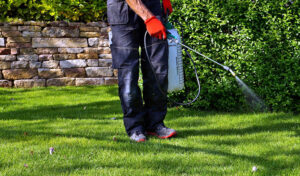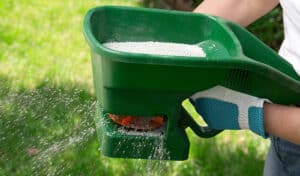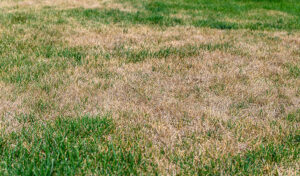Do you want to have the best lawn in the neighborhood? While you can mow, seed, and fertilize until you’re red in the face, all of your efforts will be nullified if you don’t take the proper measures to prevent lawn disease.
What is Lawn Disease?
The term “lawn disease” describes a variety of different microscopic living organisms that exist in the soil and, when under the right conditions, attack and kill grass. Common types of disease-presenting organisms include bacteria, nematodes, phytoplasmas, and, most notably, fungi. As the leading cause of most lawn diseases, fungi often remain dormant in the soil until environmental conditions, like excessively hot and dry or cold and wet temperatures, trigger an outbreak.
Types of Fungi
Generally speaking, there are four common types of disease-causing fungi, including:
Fairy ring: Leaves dark green or dead rings of grass
Rust fungus: Presents green, yellow, or brown grass
Pink snow mold: After heavy rains, brown or yellow patches of grass show white or pink fungus spots
Slime mold: White, yellow, or gray slime mold clings to grass after prolonged wet periods of time
4 Ways To Prevent Lawn Disease
Though lawn disease can be tricky to identify until it’s already taking over your yard, there are several preventative steps you can take to ensure your yard remains healthy and fungi-free all year long. Four of the most reliable prevention methods include:
1. Avoid overwatering: Giving your lawn too much water can be more damaging than not watering your lawn at all. Consider investing in a lawn irrigation system with a timer that prompts sprinklers to turn on for 10-20 minutes during morning hours.
2. Fertilize properly: Overfertilizing boosts nitrogen levels between the blades of grass and creates a haven for fungi to grow. Consider pairing your lawn fertilizer with a fungicide and develop a comprehensive lawn care program to keep your lawn as healthy as possible.
3. Mow mindfully: Mowing too short or too frequently makes your grass susceptible to infection. Be sure you’re removing no more than ⅓ of the grass blade when it comes time to mow.
4. Stay level: Eliminate both high and low areas in your lawn, as these problem areas create poor drainage patterns and increase chances of fungi buildup.
For help managing your lawn or if you’re struggling to maintain a healthy lawn, contact the professionals at Summit Lawn Care for an expert diagnosis and lawn repair, today.






